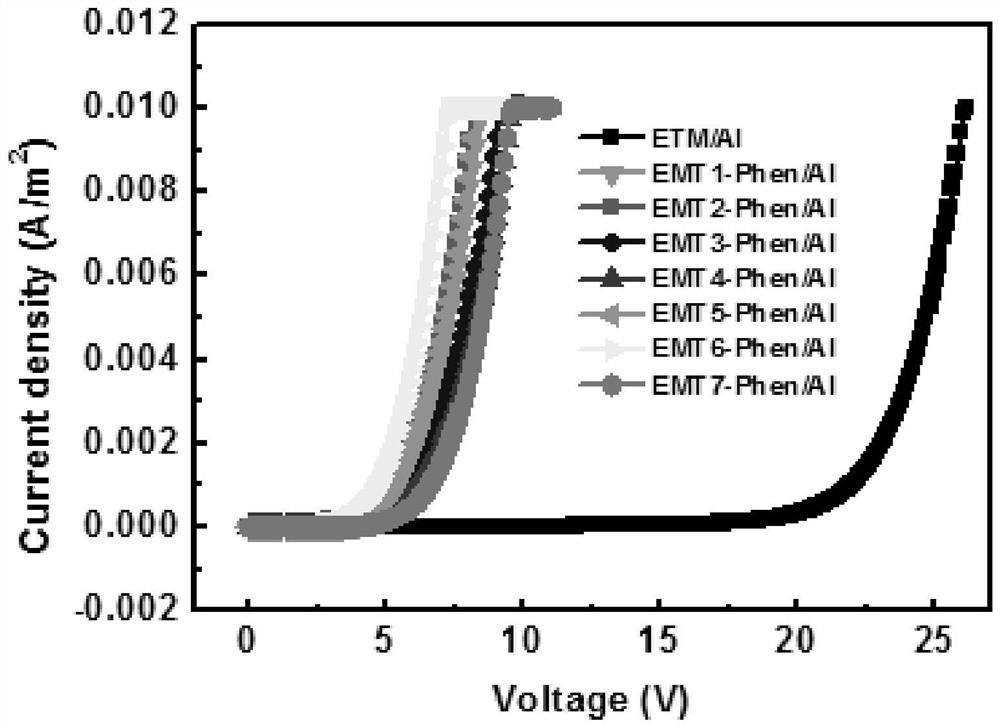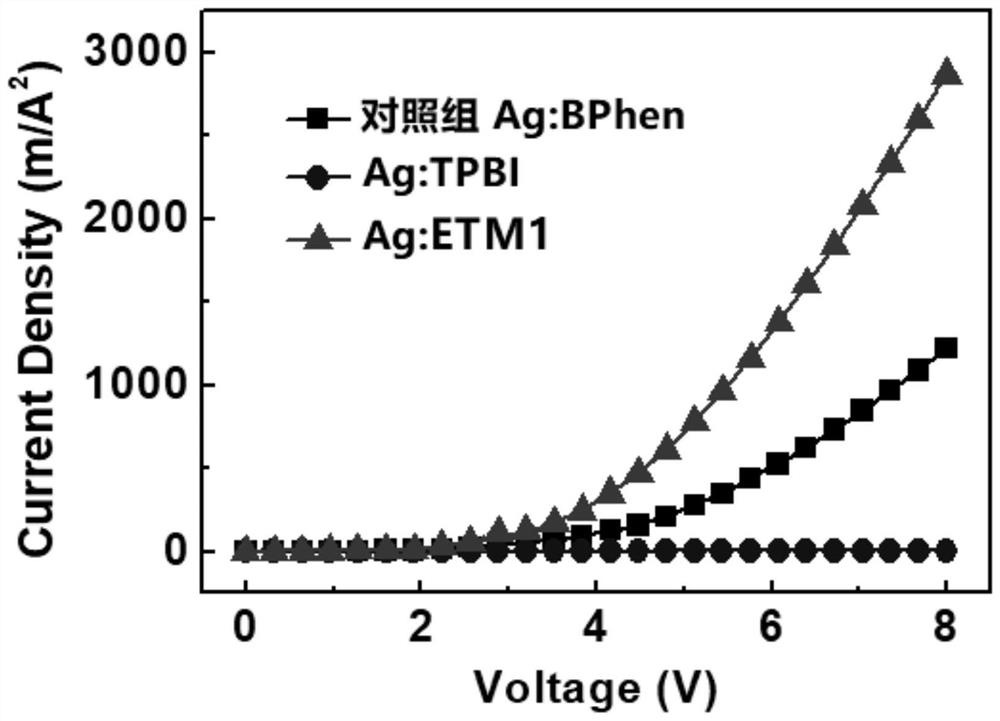Method and application of n-type doping of electron transport materials based on inert metals
A technology of electron transport materials and inert metals, applied in circuits, electrical components, electrical solid devices, etc., can solve the problems of unclear mechanism of action, difficulty in long-term storage and use, unfavorable industrial production, etc., to achieve stable evaporation atmosphere, Easy to store and use, beneficial to industrial production
- Summary
- Abstract
- Description
- Claims
- Application Information
AI Technical Summary
Problems solved by technology
Method used
Image
Examples
preparation example Construction
[0036] The preparation process of the organic electroluminescence device of the present invention is the same as that of the prior art, wherein the preparation steps of the electron transport layer 08 can be conventional vacuum co-evaporation and other steps.
[0037] The vapor deposition rate of the control metal should be relatively slow, being 0.1 angstrom / second. At this rate, the contact between the host material of the electron transport layer and the dopant material compound with coordination properties and the inert metal is more sufficient, so that the inert metal M It is more uniformly dispersed in the electron transport host material, which is conducive to recombination.
Embodiment 1
[0039] In this example, the ligands with coordination properties represented by formula (L6) are used to connect the ETM1-ETM7 electron transport materials shown in the following structure, and the electron transport host materials with coordination properties ETM1-Phen~ETM7- Phen.
[0040] The specific preparation method of ETM1-Phen includes:
[0041]
[0042] Take 5.0g of 4,7-dibromophenanthroline, 6.2g of 1-naphthaleneboronic acid, 6.1g of potassium carbonate and 1.29g of tetrakis(triphenylphosphine)palladium(0) in a 500ml round bottom flask, then add 100ml of toluene, Stir with 50ml of water and 50ml of ethanol, replace with nitrogen, raise the temperature to 90°C, react for 48 hours, then cool down to terminate the reaction, separate the liquids, extract the organic phase with dichloromethane and rotary evaporate the organic phase, then use dichloromethane / a small amount of methanol solution to dissolve Partial sublimation yields the product.
[0043] The specific p...
Embodiment 2
[0056] The structure of a single-electron device:
[0057] ITO / Bphen(100nm) / ETM1-Phen(5-30%w.t.%,5-100nm) / Al;
[0058] First electrode layer 02 (anode ITO) / hole blocking layer 07 (Bphen) / electron transport layer 08 (x%ETM1-Phen~ETM7-Phen) / second electrode layer 03 (cathode Al);
[0059] The host material of the electron transport layer in this embodiment is ETM1-Phen, and the doped inert metal is Ag.
[0060] Such as figure 2 As shown, device 1 is the curve corresponding to ETM / Al;
[0061] Device 2 is the curve corresponding to ETM1-Phen / Al;
[0062] Device 3 is the curve corresponding to ETM2-Phen / Al;
[0063] Device 4 is the curve corresponding to ETM3-Phen / Al;
[0064] Device 5 is the curve corresponding to ETM4-Phen / Al;
[0065] Device 6 is the curve corresponding to ETM5-Phen / Al;
[0066] Device 7 is the curve corresponding to ETM6-Phen / Al;
[0067] Device 8 is the curve corresponding to ETM7-Phen / Al;
[0068] The cathodes of devices 1-2 are all Al, where:
[...
PUM
 Login to View More
Login to View More Abstract
Description
Claims
Application Information
 Login to View More
Login to View More - R&D
- Intellectual Property
- Life Sciences
- Materials
- Tech Scout
- Unparalleled Data Quality
- Higher Quality Content
- 60% Fewer Hallucinations
Browse by: Latest US Patents, China's latest patents, Technical Efficacy Thesaurus, Application Domain, Technology Topic, Popular Technical Reports.
© 2025 PatSnap. All rights reserved.Legal|Privacy policy|Modern Slavery Act Transparency Statement|Sitemap|About US| Contact US: help@patsnap.com



